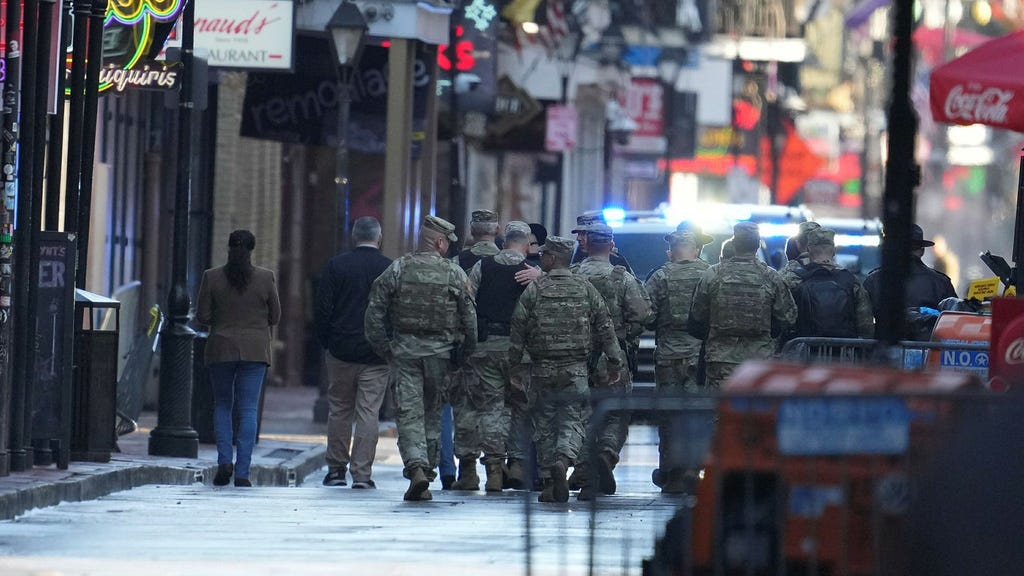The New Year’s Eve attack on Bourbon Street in New Orleans, which claimed the lives of 15 people and injured 30 others, has been classified as an act of terrorism. The perpetrator, identified as 42-year-old ex-military Shamsud-Din Jabbar, drove a white vehicle at high speed into the crowd of revelers before crashing and opening fire on police. He was subsequently shot and killed by law enforcement. Inside his vehicle, authorities discovered an ISIS flag, weapons, and suspected explosive devices. While initial investigations explored the possibility of multiple perpetrators, surveillance footage later revealed Jabbar himself placed the two suspected explosive devices found in the vicinity of Bourbon Street.
The investigation, led by the FBI in conjunction with over 1,000 officers from various agencies, is actively pursuing leads to determine if any other individuals were involved. While authorities maintain a degree of certainty regarding the involvement of additional persons, no concrete evidence has surfaced yet. Delving into the digital footprint of the attack, investigators are meticulously combing through 400 tips received by the FBI, analyzing data, and reviewing surveillance footage to piece together the events leading up to the tragedy. House searches have been executed both within New Orleans and outside Louisiana, including Jabbar’s residence in Houston, Texas. Authorities assure the public that there is no ongoing threat to the community.
One avenue of investigation explored a potential link between the New Orleans attack and a separate incident involving a Tesla explosion outside President-elect Donald Trump’s hotel complex in Las Vegas, which also resulted in fatalities. The connection stemmed from the fact that both vehicles were rented through the same service. However, investigators have stated there is currently no clear link between the two incidents. The FBI is continuing its comprehensive investigation, meticulously gathering evidence to determine the full scope of Jabbar’s actions and motivations.
Jabbar’s actions leading up to the attack paint a picture of premeditated violence. The day prior to the incident, he rented the vehicle in Houston and drove to New Orleans on New Year’s Eve. In the hours preceding the attack, he posted five videos on social media, one of which declared his allegiance to ISIS earlier that summer. This digital trail offers crucial insights into his radicalization and intent. Jabbar’s eight-year military service, including a stint in Afghanistan and subsequent reserve duty, has also come under scrutiny. His former military superiors have expressed disbelief at his transformation, describing him as a disciplined and dedicated soldier.
The personal life of Shamsud-Din Jabbar reveals a man undergoing significant turmoil. Having gone through his second divorce in 2022, he was reportedly facing financial difficulties, a fact communicated in emails to his ex-wife’s attorney. Raised as a Christian, Jabbar later converted to Islam. While he occasionally shared passionate religious views on social media, acquaintances described these posts as non-extreme and devoid of violent rhetoric. This stark contrast between his online persona and the horrific act he committed adds another layer of complexity to the investigation. The sudden radicalization and the apparent absence of any prior warning signs raise critical questions about the factors that drove him to such extremes.
In the aftermath of the attack, the city of New Orleans is grappling with the tragedy. Local authorities have expressed their commitment to bringing those responsible to justice and ensuring the safety of the community. Bourbon Street, the heart of the city’s vibrant nightlife, is scheduled to reopen to the public, symbolizing resilience in the face of terror. The attack serves as a somber reminder of the ongoing threat of extremist violence and the challenges of identifying and preventing such acts. The ongoing investigation is crucial not only for bringing closure to the victims and their families but also for understanding the factors that contribute to radicalization and preventing similar tragedies in the future.














